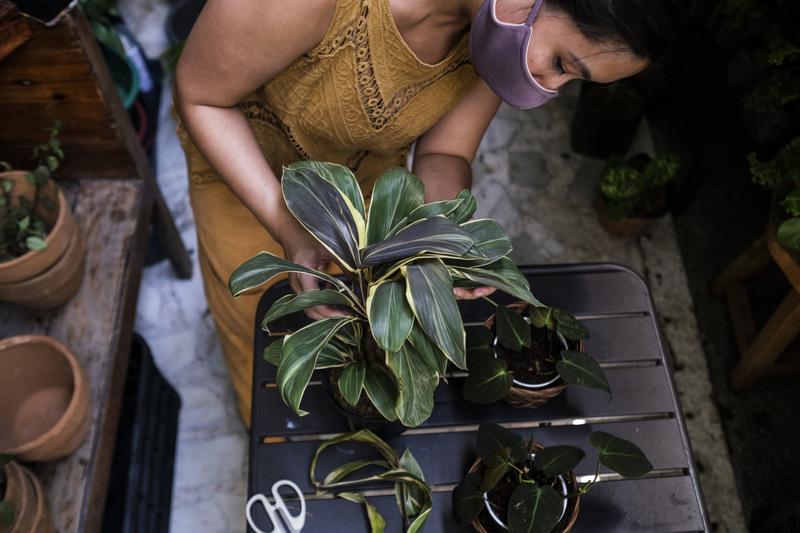 A business owner prepares an order in a workspace in Quezon City on Sept 11, 2020. (PHOTO / BLOOMBERG)
A business owner prepares an order in a workspace in Quezon City on Sept 11, 2020. (PHOTO / BLOOMBERG)
The pandemic has set off a wave of theft in the Philippines. The target? Plants.
The government has stepped up monitoring of social media and patrolling of protected natural areas amid reports of traders scouring mountains and forests for plants, including endangered species, to meet a sudden spike in demand from locked-down Filipinos who are craving some greenery in their homes.
Common plants such as caladiums, rubber trees and ferns are selling in legal nurseries for 35% to 40% more than before COVID, according to Win Marcella, a hobbyist
“Illegal gatherers and collectors are having a fiesta because the market is bigger and prices are more attractive,” said Rogelio Demallete, an ecosystem specialist at the nation’s Biodiversity Management Bureau. “People are buying and raising plants because of boredom from the quarantine.”
Carniverous pitcher plants and bantigue trees, popular in crafting bonsai, are among those sought after, Demallete said. The bureau’s agents, hampered by quarantine restrictions, are working with the National Bureau of Investigation to catch illegal gatherers and traders of the “vulnerable” and “endangered” species such as Alocasia Zebrina and Alocasia Sanderiana.
ALSO READ: In Philippine slums, heat, hunger take a toll under lockdown
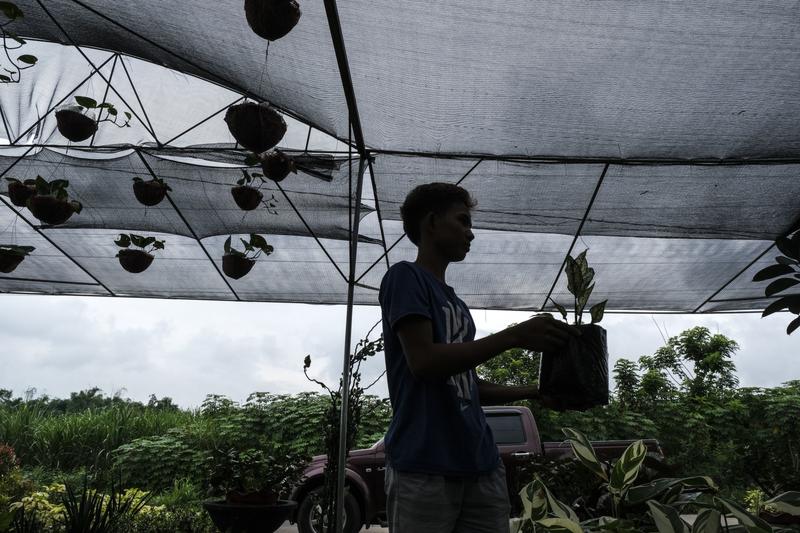 A vendor carries a plant in a nursery in Batangas, Philippines on Sept 12, 2020. (VEEJAY VILLAFRANCA / BLOOMBERG)
A vendor carries a plant in a nursery in Batangas, Philippines on Sept 12, 2020. (VEEJAY VILLAFRANCA / BLOOMBERG)
White leaves
Common plants such as caladiums, rubber trees and ferns are selling in legal nurseries for 35 percent to 40 percent more than before COVID, according to Win Marcella, a hobbyist who is spending more time tending his garden. A mature Monstera Deliciosa, or swiss cheese plant, now fetches at least 3,000 pesos (US$62), compared with as little as 800 pesos before. Other enthusiasts on social media say demand for the rare white-leafed subspecies Deliciosa Albo is so high that they are valued at 7,000 pesos per leaf.
Even as the government begins easing a lockdown that was reimposed in the capital last month after a spike in new COVID cases, green fever has prompted some entrepreneurs to switch to or add horticulture after their existing businesses fell victim to the effects of the virus.
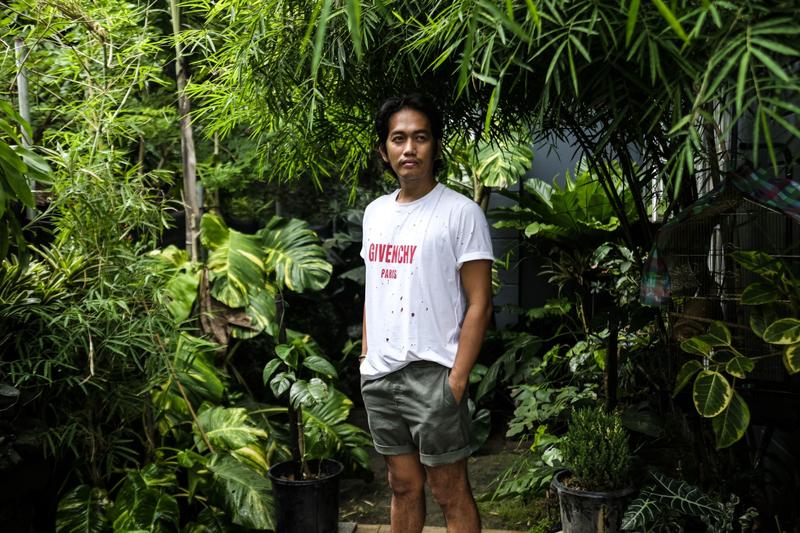 This undated photo shows Marvin Braceros, the chef behind Philippine restaurant Yum in Milan. (PHOTO / BLOOMBERG)
This undated photo shows Marvin Braceros, the chef behind Philippine restaurant Yum in Milan. (PHOTO / BLOOMBERG)
Marvin Braceros, the chef behind Philippine restaurant Yum in Milan, had to close his fine-dining outlet in a Manila shopping mall earlier this year as his customers vanished. In a small space offered him by the mall landlord to help recover some of his losses he began selling house plants. Now he has stalls in two malls and plans to open seven more by October.
“I was surprised with the response,” said Braceros. “I think it’s driven by the need for positive vibes and a stress reliever. I don’t think this is just a fad. People are more conscious of healthy living.”
The desire to have something living to care for in an apartment has boosted sales of house plants in other cities facing lockdowns. Even before the pandemic there had been a growing trend among milennials to raise “plant babies” in cities such as New York and London. But the demand in Manila for greenery is especially striking. One of the most densely populated cities in the world, with more than 27,000 people per square mile, it’s also one of the largest, with an estimated 23 million people sandwiched between the mountains and Manila Bay.
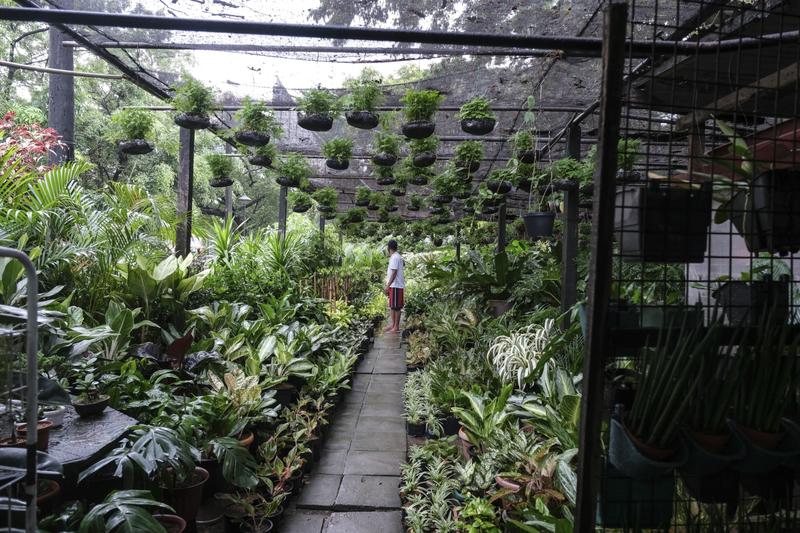 A member of staff tends to plants at Bulacan Garden in Quezon City on Sept 11, 2020. (PHOTO / BLOOMBERG)
A member of staff tends to plants at Bulacan Garden in Quezon City on Sept 11, 2020. (PHOTO / BLOOMBERG)
The need for nature is helping established plant wholesalers like Bulacan Garden Corp. survive a drop in business from their traditional customers that landscape new developments or supply hotels and offices. While sales to bulk buyers have more than halved, a daily stream of individuals who buy three to five pieces each has kept Bulacan Garden’s two Manila shops busy, said store manager Ricky Santiago.
“Many people have nowhere to go and nothing to do during the lockdown so they raise plants to fill the time,” Santiago said. “Retail buyers are not replacing the volume lost from bulk orders, but they are helping us and many others stay in survival mode.”
READ MORE: Manila cruise flotilla offers crew confinement in comfort
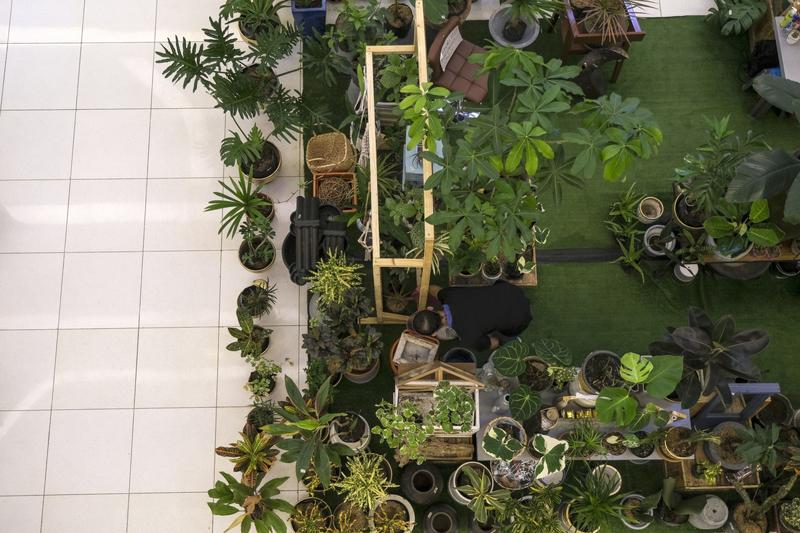 Plants are displayed for sale at a mall in Makati City, Philippines on Sept 11, 2020. (PHOTO / BLOOMBERG)
Plants are displayed for sale at a mall in Makati City, Philippines on Sept 11, 2020. (PHOTO / BLOOMBERG)
Demand from the capital has spread to small operators in the suburbs around Manila’s vast urban sprawl. Jeffrey Cabida, who helps run a backyard nursery 85 kilometers south of the capital, says most of its sales now come from Manila with orders up eight-fold from a year ago. “So many are buying that some plants run out of stock,” he said.
“We’re surprised at the increase,” Santiago said. “We can’t help but wonder because these aren’t consumables. This isn’t food that you can eat.”
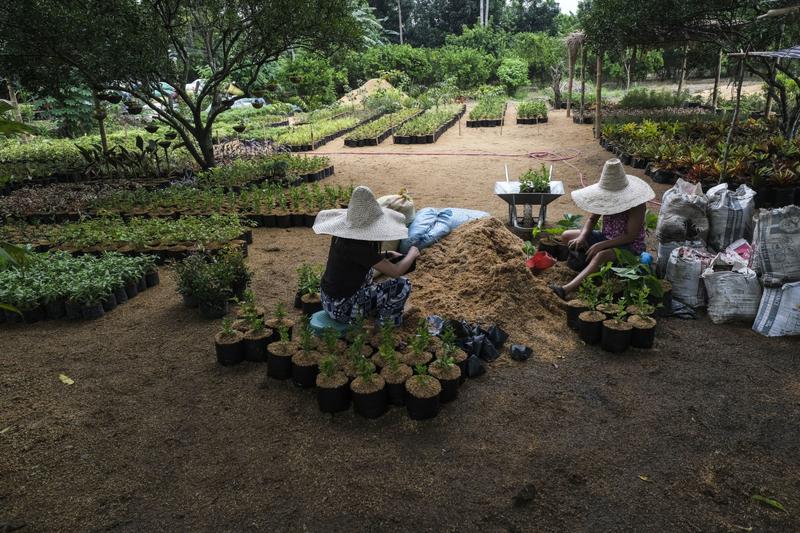 Workers re-pot plants at a nursery in Batangas, Philippines on Sept 12, 2020. (PHOTO / BLOOMBERG)
Workers re-pot plants at a nursery in Batangas, Philippines on Sept 12, 2020. (PHOTO / BLOOMBERG)


